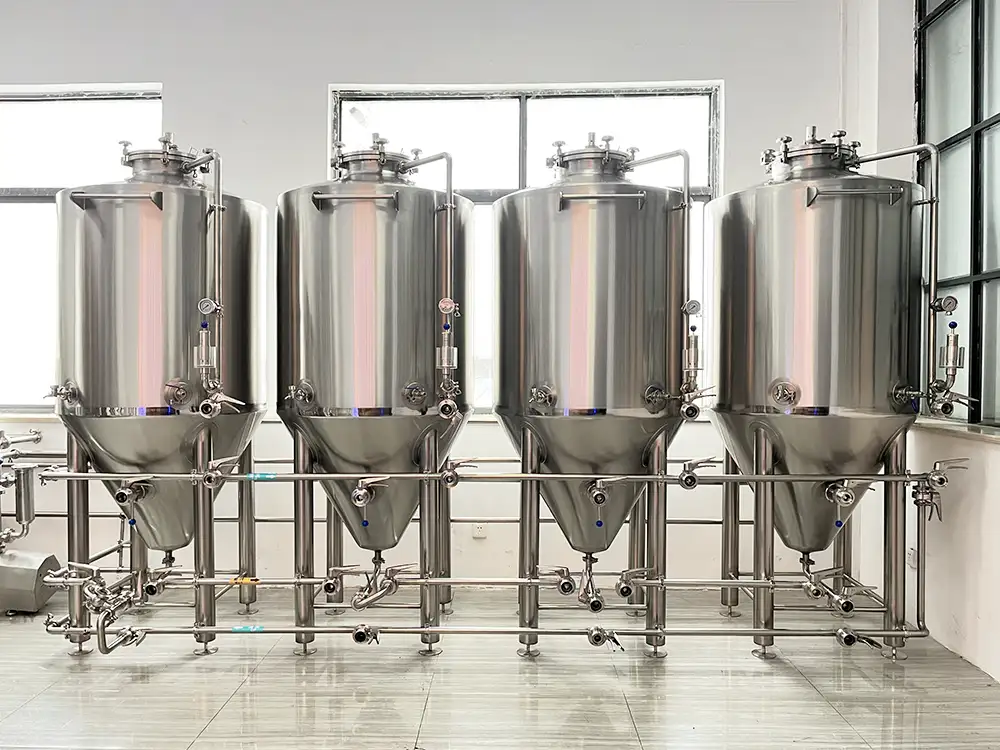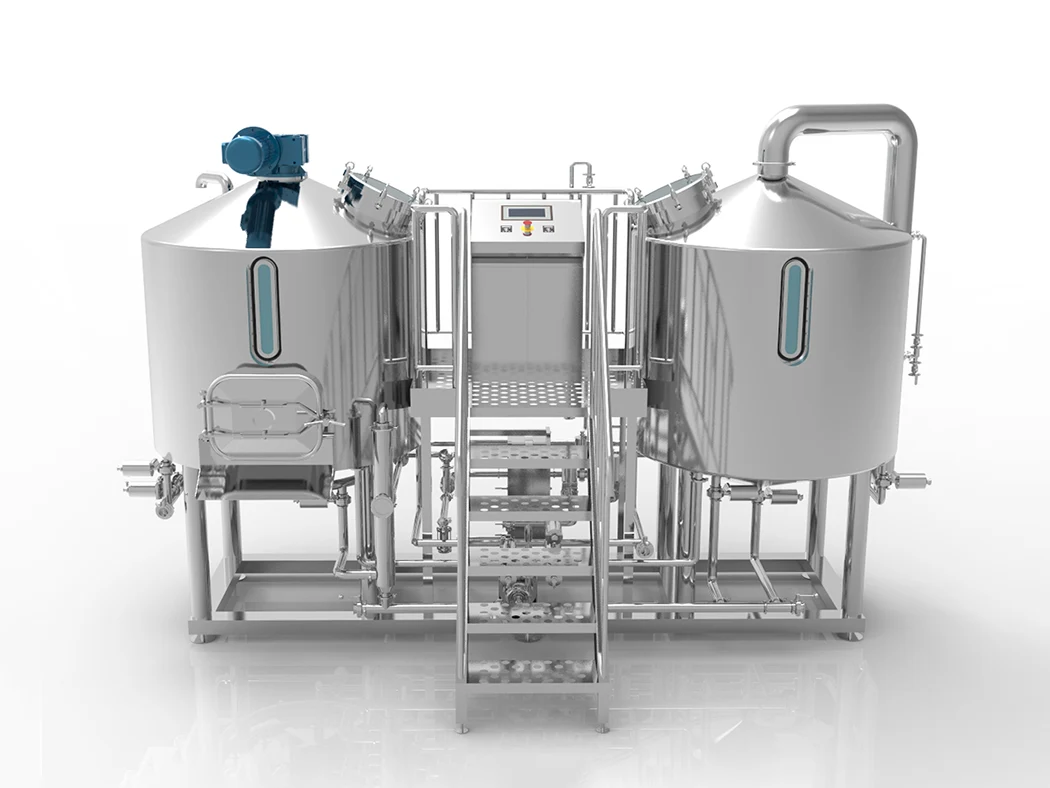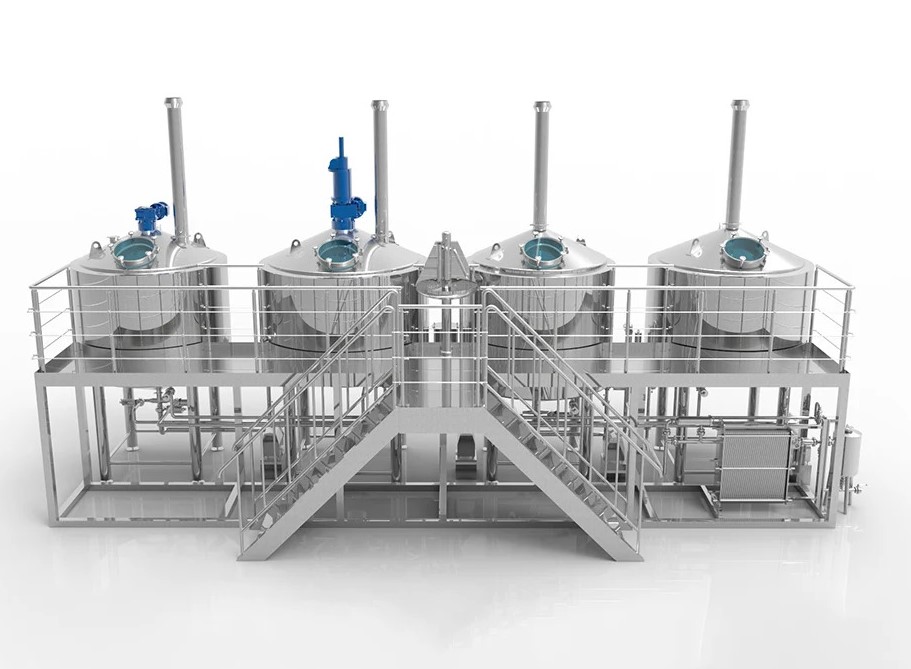Struggling with inconsistent brews and disappointing flavors? Unreliable fermenttation equipment leads to wasted time and costly mistakes. Discover how choosing the right alcohol fermenter transforms your brewing process and boosts every batch.
An alcohol fermenter is a dedicated vessel where yeast converts sugars into alcohol and carbon dioxide. Choosing the right fermenter ensures controlled fermentation, improves flavors, and simplifies your beer or wine production. From carboys to conical fermenters, explore which solution fits your batch size and brewing goals.
What Is a Fermenter and Why Does It Matter in Brewing?
A ferment tank isn’t just a container—it’s the foundation of your brewing operation. At its core, a fermenter provides the environment where yeast works its magic, transforming simple sugars into alcohol and distinctive flavor compounds. Whether you’re crafting a small homebrew or managing a thriving commercial brewery, the fermenter you select will influence your batch from start to finish.
Brewing equipment manufacturers understand the critical importance of precise fermentation. With years of technical support and innovation, we have seen firsthand how the right fermenter improves taste, clarity, and yield for every brewer. In today’s market, breweries have access to advanced 발효 장비—from classic glass carboys to state-of-the-art stainless steel conical fermenters—that empower both beginners and professionals to achieve consistent, high-quality results.
살펴보기 나노 양조장 장비 page to discover fermenters designed for flexibility and scalability.

How Does Alcohol Fermentation Work?
Fermentation is the beating heart of every great beer, wine, hard cider, or mead. This biological process is powered by yeast: as soon as yeast is pitched into a fermenter filled with wort or must, it begins to consume available sugars. This triggers a complex reaction where sugars are broken down, producing alcohol, carbon dioxide, and a host of flavorful byproducts.
The Stages of Fermentation
- Primary fermentation: This stage is the most active. Yeast rapidly multiplies and converts most sugars into alcohol, causing bubbling in your airlock and a layer of foam called krausen.
- Secondary fermentation: Transferring your brew into a clean vessel (like a glass carboy) after primary fermentation allows the beer or wine to clarify and mature, producing a cleaner flavor.
- Aging and conditioning: Some brews benefit from further aging, allowing flavors to mellow and harmonize.
Successful fermentation relies on three things: viable yeast, optimal temperature, and a sanitized fermentation environment. Any lapse in these factors can result in stuck fermentation or unwanted off-flavors.
Interested in learning more about fermentation vessels for kombucha, beer, and cider? See our kombucha brewing vessel solutions for a full range of specialized fermenters.
Glass Carboy vs Plastic Carboy: Which Fermentation Vessel Is Better?
Selecting the right fermentation vessel is a key decision for any brewer. 유리 카보이 have been trusted for generations. Their non-porous surface resists scratches, making them easy to clean and sanitize. They’re ideal for those who want to avoid the risk of harboring bacteria from repeated use. Plus, glass doesn’t absorb odors or flavors—essential when switching between different beer, wine, or mead styles.
On the other hand, plastic carboys and fermentation buckets are affordable and lightweight, making them popular among beginners or those brewing large, multi-gallon batches. Modern food grade plastics are designed to be robust, though they can scratch if handled roughly. Scratches should be avoided, as they can harbor microorganisms that compromise your batch. However, for many homebrewers, the ease of handling and low cost make plastic fermenters a practical choice.
| 기능 | 유리 카보이 | Plastic Carboy |
|---|---|---|
| 무게 | Heavy | Lightweight |
| 내구성 | Fragile | Shatter-resistant |
| 위생 | Easy, non-porous | Can scratch, needs care |
| 가격 | 더 높음 | Lower |
| Odor Retention | 아니요 | Possible with scratches |
| Food Grade | 예 | 예 |
If you’re a commercial brewer or planning to expand, consider upgrading to 스테인리스 스틸 발효기, which offer the best in durability, performance, and cleanability.
Why Choose a Conical Fermenter for Your Next Batch?
Conical fermenters are a favorite among professional brewers for a reason. Their unique cone shape allows yeast and trub (sediment) to settle at the bottom, making removal easy. This design helps eliminate the need for siphoning, letting you draw off clear beer or wine straight from the spigot. No more disturbing the sediment or risking oxidation!

Top Benefits of Conical Fermenters
- Cleaner beer and wine: The trub collects neatly in the cone, so each batch finishes clearer with less effort.
- Simplified transfers: Use the bottom valve to dump sediment or harvest yeast for reuse.
- All-in-one solution: Many conical fermenters include built-in spigots, thermowells, and ports for dry hop filters or temperature probes.
Stainless steel conical fermenters are the gold standard for craft breweries, but affordable plastic models are available for homebrewers looking for that same professional edge. For growing businesses, see our 상업용 발효 탱크—engineered for both flexibility and scale.
How Do Fermentation Buckets and Carboys Compare?
Fermentation buckets are often the first vessel new brewers encounter. These large, food grade plastic containers usually hold 6.5 gallons or more, giving ample headspace for active fermentation. They’re budget-friendly, easy to clean (thanks to wide mouths), and typically come as part of a fermenter kit. This makes them a practical way to craft a brew at home without major upfront investment.
Carboys—whether glass or plastic—are typically used for secondary fermentation. Their narrow necks reduce oxygen exposure, helping to preserve flavor and prevent spoilage during aging. Glass carboys allow you to observe the fermentation process, which is not only satisfying but also helps diagnose any issues early.
Many advanced brewers rotate between buckets for primary fermentation and carboys for secondary, taking advantage of the strengths of both. This two-stage process improves clarity and lets more trub settle out, especially for styles like IPA or fruit beer.
To see a full selection of carboys and fermentation buckets, check our microbrewery brewing equipment guide—featuring options for every batch size and skill level.
What Size Fermenter Do You Need? Exploring Batch Sizes
The size of your fermenter determines the volume and flexibility of your operation. Homebrewers commonly start with 1-gallon jugs, 5-gallon carboys, or 6.5-gallon fermentation buckets. For microbreweries or ambitious home setups, larger conical fermenters or stainless tanks allow for consistent multi-gallon batches.
Recommended Fermenter Sizes
| 배치 크기 | Recommended Vessel | Typical Use Cases |
|---|---|---|
| 1갤런 | Jug, small carboy | Mead, cider, small test batches |
| 5갤런 | Plastic or glass carboy, bucket | Homebrew, beer, or wine |
| 7+ gallons | Conical fermenter, large bucket | Split batches, lagers, sours |
| 1 bbl and up | Stainless steel conical fermenter | Nano/microbreweries, pilot systems |
Remember to always choose a fermenter with extra headspace (about 20% more than your target batch size) to accommodate krausen and active fermentation. If you’re planning to brew commercially or scale up, our 나노 브루잉 시스템 are tailored for growing demand and maximum control.
What Are the Most Essential Fermenter Accessories?
When optimizing your fermentation process, having the right fermenter accessories can make a world of difference. The basics start with an 에어락—a small but crucial device that lets carbon dioxide escape while blocking air and contaminants. Without a proper airlock, your brew is vulnerable to spoilage, so it’s always a non-negotiable for every batch.
A spigot is another key accessory, especially for fermenters designed to eliminate the need for siphoning. With a spigot, you can easily attach your bottle filler, reducing the risk of contamination and oxidation. In fact, many modern fermenter kits now include spigots as standard.
Other popular accessories include:
- Thermowells: Monitor the fermentation environment to keep your yeast at the ideal temperature.
- Dry hop filter: Allows you to add hops, fruit, or spices during secondary fermentation without clogging the vessel.
- Bottle filler: Directly connect to the spigot and bottle efficiently—saving time and minimizing waste.
- Sanitizer spray bottles: Help you quickly sanitize surfaces and accessories before use.
Discover accessory bundles and specialized upgrades in our beer fermenter tank collection, supporting both homebrew and commercial-scale production.
How Does Yeast Affect the Fermentation Process?
Yeast is truly the unsung hero in brewing, converting wort or juice sugars into alcohol, flavors, and those tiny bubbles we all love. The strain of yeast you select will shape the taste, aroma, and clarity of your final beer, wine, or kombucha. Reliable yeast performance also depends on healthy cell counts, proper storage, and the creation of a viable yeast starter.

Key considerations for optimal fermentation:
- Viable yeast: Always check manufacturing dates and store yeast (dry or liquid) as recommended.
- Yeast starter: For high gravity beers or larger batches, building up your yeast population ensures vigorous fermentation and reduces lag time.
- Fermentation environment: Maintain stable temperatures and avoid large swings, as different yeast strains thrive at specific ranges.
In our experience as a leading brewing equipment supplier, we advise all customers—especially commercial brewery startups and beverage entrepreneurs—to experiment with several yeast strains and fermentation temperatures to find what fits your unique style. This approach helps you craft a brew with signature flavor, improved consistency, and fewer stuck fermentations.
Interested in professional fermentation control? Our micro brewery system offers precision controls for yeast management.
How to Clean and Sanitize Your Fermenter for Every Batch
Sanitation is the silent backbone of every successful fermentation. Even the best fermenter won’t save your brew if it’s harboring bacteria, wild yeast, or mold from previous batches. That’s why every brewer—whether homebrew beginner or seasoned pro—follows a meticulous cleaning and sanitizing regimen.
Effective Cleaning Workflow:
- Immediate rinse: As soon as the fermenter is emptied, rinse with warm water to prevent trub from sticking.
- Brewery-specific cleaner: Use only cleaners designed for brewing equipment to avoid residue buildup.
- Physical scrubbing: For stubborn deposits in carboys, use soft brushes or cleaning beads.
- Sanitize: Always sanitize right before use, not days in advance. No-rinse sanitizers save time and eliminate risk.
Pro tip: Inspect plastic fermenters regularly for scratches. If you notice persistent odor or haze, it may be time to replace the vessel.
Want to ensure your equipment is always ready? Check out our full fermentation equipment cleaning guide for detailed protocols used by professional breweries worldwide.
When Should You Use a Secondary Fermentation?
Secondary fermentation isn’t required for every style, but for those seeking clarity and depth of flavor, it’s a vital step. After primary fermentation slows (when bubbling in the airlock stops), many brewers transfer their beer or wine to a clean carboy or jug. This helps separate the batch from the trub, reducing the risk of off-flavors and promoting brilliance in appearance.
Benefits of Secondary Fermentation:
- Clarity: More sediment drops out, resulting in a brighter product.
- Flavor maturation: Reduces harshness and lets subtle flavors develop.
- Easy additions: Perfect time to add dry hops, fruit, or spices using a dry hop filter.
Some classic styles—like lagers or Belgian ales—benefit greatly from this extra stage. Commercial breweries often design their process around these multi-stage fermenters, using conical fermenters to streamline both primary and secondary steps in one vessel.
Explore advanced fermentation strategies with our nano brewery system and take your batch quality to the next level.
Fermentation Equipment Trends: Stainless Steel, Plastic, or Glass?
Today’s brewers have more choices than ever. Each fermenter material has its place, depending on your needs, scale, and budget.
Stainless steel conical fermenters are king in the commercial world. They’re easy to clean, immune to light exposure, and resist both scratches and chemical damage. Many breweries invest in conical fermenters for both pilot and production batches, taking advantage of their longevity and ability to handle high pressures.

유리 카보이 remain popular for smaller gallon batches, offering unmatched clarity for visual monitoring and a completely non-reactive surface. However, their weight and fragility limit use at scale.
플라스틱 발효기 and buckets are still a go-to for entry-level brewers, offering the best balance of cost and convenience. Just remember—food grade plastic only, and replace at the first sign of wear.
For winery and cider producers, specialized fermentation tanks (such as jacketed wine fermenters or variable capacity tanks) are also gaining traction, allowing for precise temperature and oxygen control. Learn about these innovations at our wine making equipment page.
Real-World Case Study: Boosting Batch Consistency With the Right Fermenter
One fast-growing brewery in the Midwest upgraded their process by switching from basic plastic carboys to a suite of stainless steel conical fermenters. Within six months, they reported a 20% increase in yield, fewer contamination events, and overwhelmingly positive customer feedback. Their head brewer credits the change to easier cleaning, precise trub management, and being able to bottle directly from the spigot.
A similar success was seen by a kombucha startup that moved to purpose-built fermenter tanks, enabling them to scale up without sacrificing quality. Read more about scaling safely with our 콤부차 양조 장비.
자주 묻는 질문
How do I choose the right size fermenter for my brewery?
Start with your average batch size. Allow at least 20% headspace for krausen and active fermentation. For rapid growth, consider modular systems.
Can I use the same fermenter for beer, wine, and kombucha?
Technically yes, but be mindful of flavor carryover and sanitation. Many producers dedicate certain fermenters to specific beverages.
How often should I replace my plastic fermenters?
Inspect them regularly. Replace immediately if you notice deep scratches, lingering odors, or repeated sanitation issues.
What’s the easiest way to transfer beer from the fermenter?
Use a spigot or a racking cane with an auto-siphon. Many modern conical fermenters eliminate the need for siphoning altogether.
Do I need special equipment for secondary fermentation?
Not necessarily. Any clean, sanitized carboy or jug will work. However, conical fermenters with multiple valves offer the easiest and most complete way to add secondary fermentation to your brew process.
Internal Links Throughout Article
- For all-in-one 소규모 양조장 장비 solutions, see our comprehensive lineup.
- Discover flexible nano brewery equipment for small batch craft beer.
- Dive into beer fermenter tank selection for both home and commercial use.
- Find advanced kombucha brewing vessel options.
- Explore specialty 와인 제조 장비 for every scale.
- Compare and upgrade to stainless steel conical fermenters.
주요 내용
- The right fermenter is vital for consistent, flavorful, and high-yield beer, wine, or kombucha production.
- Sanitation, accessories, and yeast management play equally important roles in the fermentation process.
- Invest in scalable, durable fermentation equipment for future growth.
- Use internal resources, such as expert guides and turnkey solutions, to streamline your operations.
- Distribute fermenter choices across batch size, budget, and beverage type for best results.
Ready to upgrade your brewing operation with proven fermentation equipment?
Explore professional brewing equipment solutions and contact our team for custom fermenter recommendations.
Crafted by an industry-leading brewing equipment manufacturer with global support, technical expertise, and an unwavering focus on your success. For expert consultation or turnkey service, connect with us today.



